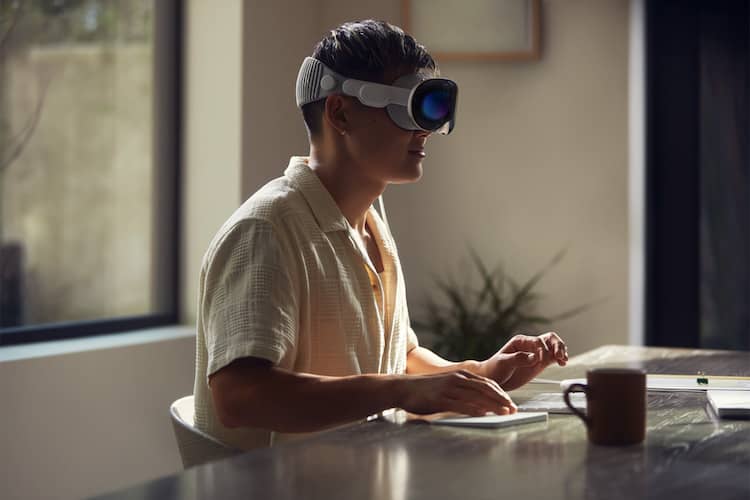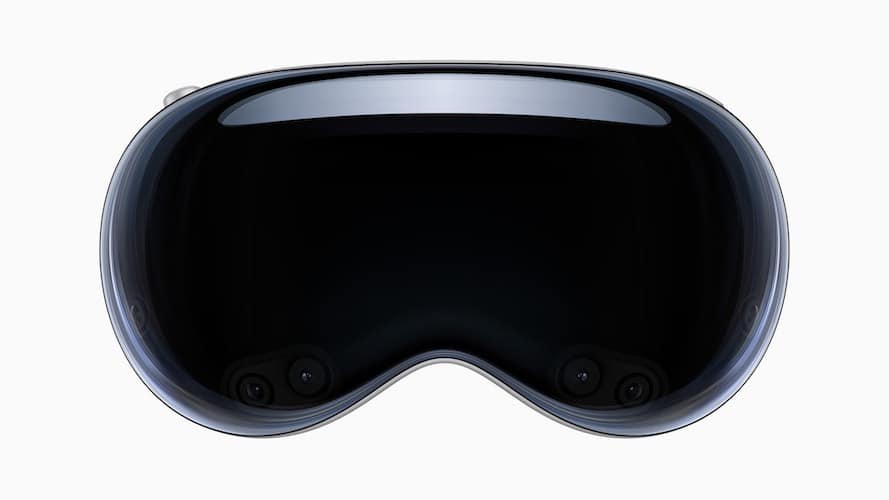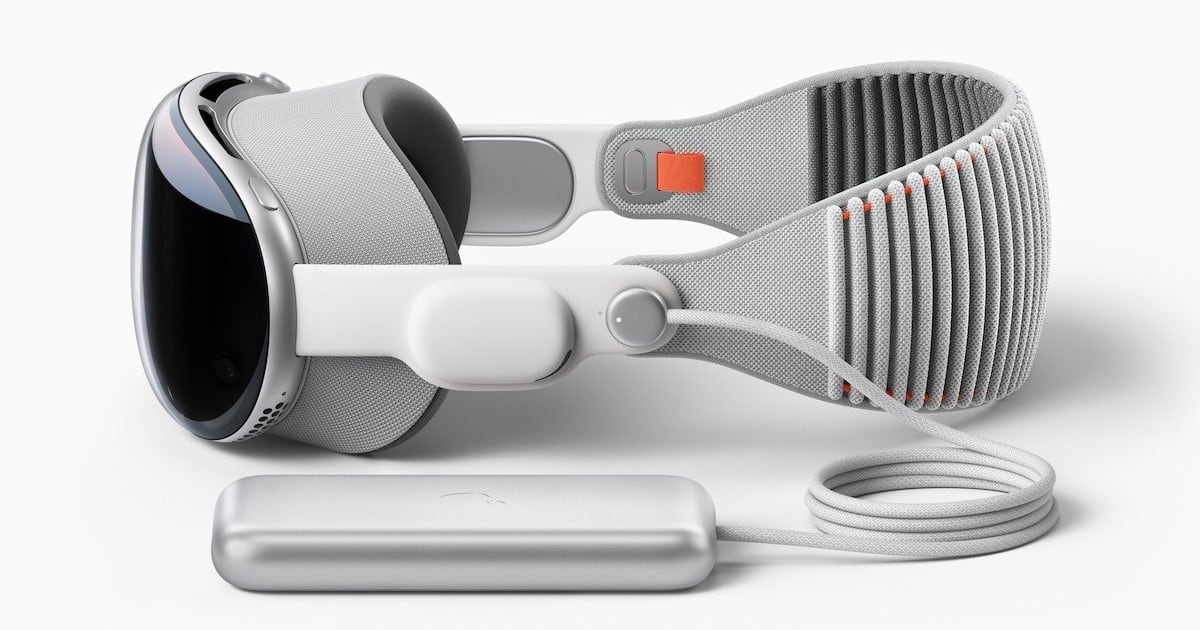The Vision Pro is Apple’s foray into the world of spatial computing; a chance to offer consumers new connections to both technology and reality. While rumors have been circulating about this device for quite some time, Apple unveiled the Vision Pro at the 2023 Worldwide Developers Conference. While many have positive impressions concerning the technical prowess of the device, some features, particularly the battery, have critics and analysts up in arms. Those that have an interest in the Vision Pro, particularly if you want to buy the first-generation, may want to consider some important factors concerning the battery.
Ever wondered why the Apple Vision Pro relies on an external battery, now known as the Magic Battery? Let’s dive into the secrets that a user discovered within the tvOS 17 beta 5 code. With the company entering the world of spatial computing thanks to its Vision Pro, this first step comes with some positives and negatives. No doubt the headset creates immersive and incredible experiences for users, but folks may want to understand a bit more about the ins and outs of the battery before deciding on the device.
Evolution of Naming: The Journey of the Apple Vision Pro Battery
Originally known as the MagSafe Battery Pack due to it sharing many of the same qualities as the similarly named iPhone battery pack, @aaronp613 first made the discovery and announced the naming evolution on social media. While many originally referred to the device as the MagSafe Battery Pack, Aaron discovered the Magic Battery moniker within the tvOS beta 5 code.
Concerning the battery itself, the Magic Battery features some of the same MagSafe Properties as its iPhone brethren, though it does have some notable differences. For starters, the design of the battery allows it to fit in a user’s pocket, and it tethers itself to the Vision Pro via a woven braided power cable. The cable then attaches to the left side of the headset. Users may also use the cable to charge the headset via the Magic Battery or a different power source.
Decoding the Battery Capacity
While @aaronp613 made the discovery, Bloomberg’s Mark Gurman had his thoughts on this news, stating “There’s nothing magical about a two-hour tethered battery pack, but OK”. Gurman’s criticism likely stems from the fact that the 6,500mAh cell battery is only capable of producing a two-hour battery life for Vision Pro users. While many may view this as underwhelming, critics are also observing some additional thoughts on the battery itself. Primarily, the location.
Typically, mixed reality headsets integrate the battery into the device itself. However, the design of Apple’s Magic Battery allows users to wear it at their waste. During testing of the Vision Pro, however, Apple observed that the headset weight was a bit much when the battery was integrated with the device, stirring the decision to have the battery separate from the headset. While some may say this design choice is a nuisance, others may see it as a way to easily swap the battery.
Apple Vision Pro Battery Swapping and Going Third-Party
While some may be disappointed by the real battery capacity of the Magic Battery, there are some benefits to having it separate from the headset. For example, having the battery separate from the device allows for battery swapping while users are on the go or traveling. However, it should be noted that the Vision Pro will likely ship with just a single battery, meaning users will need to buy additional power if they plan on swapping.

While this is great for the Apple accessory ecosystem, many consumers may be displeased by the capabilities of the Magic Battery as well as the need to buy additional accessories. However, the need to buy additional battery packs shouldn’t come as too much of a surprise, as devices with an external battery typically only come with one anyway. Nonetheless, many might have qualms concerning some of the battery decisions implemented by Apple.
Another thing to consider is third-party accessories. Considering most Apple products, many typically feature a wide array of third-party peripherals. While some of these products don’t offer nearly the quality an Apple product does, that doesn’t mean many won’t offer some decent alternatives. For those that may sneer at Apple’s 6,500mAh cell battery for the Vision Pro, third-party options may provide beefier alternatives.
Consider the Juice: Why You Might Need a Larger Battery
Though Gurman’s remarks about the Magic Battery are snarky, let’s consider the two-hour battery life claim for a moment. First, virtually all Apple products feature methods and settings to help maintain decent battery life. As an example, consider Low Power Mode on the iPhone. While the Vision Pro requires a fair amount of juice for that breakthrough display, Spatial Audio, it shouldn’t be too difficult finding ways to get more life out of a battery.
Another factor to consider is how you plan on using the Vision Pro. While it is capable of being portable, you will likely remain stationary while using the Vision Pro for a good portion of the time. While folks may not appreciate wired virtual reality headsets, using a power source other than the battery may alleviate potential issues. Essentially, if you’re not happy with the life of your battery for the Vision Pro, you’re likely able to change it.
What This Means for Apple
While many may find the recent developments concerning the Vision Pro Magic Battery to be a tad alarming, the information shouldn’t be all that surprising. During the development of the Vision Pro headset, analyst Ming-Chi Kuo noted on numerous occasions that the first headset from Apple was a means of “testing” the market. Essentially, Apple will likely not expect the first Vision Pro to reach a mass adoption stage. However, one important thing to note is that this likely will be great for app developers as larger areas of the market get ahold of the Vision Pro.
Nonetheless, while the initial release of the Vision Pro is more of a means to get the device into the hands of users and developers, it is still one of the most powerful headsets to arrive on the market. Featuring two ultra-high-resolutions displays that can make a user feel like they’re seeing a movie at Christoper Nolan’s house, the advanced Spatial Audio system also boasts immersive and powerful sound capabilities. So not only are you getting some jaw-dropping experiences visually, but you are also getting some outstanding audio experiences thanks to Spatial Audio.

Additionally, the Vision Pro also features a glass front and aluminum frame, five sensors, 12 cameras, and a 4K display for each eye. In terms of processing power, the Vision Pro not only sports the M2 silicon chip but also includes a new chip known as the R1. The Vision Pro will likely see an early 2024 release and will retail for $3,499.
What This Means for Consumers
For those considering if the Apple Vision Pro is for them, realize that you are at the forefront of Apple’s emerging tech. Again, going back to the iPhone, remember what the first iPhone was like, and then consider even one or two generations from then. The device became more polished and refined. If an external battery with questionable longevity doesn’t seem right for you, the second generation potentially will be.
While some may not be too happy with the current knowledge about the external battery pack, users should also remember that Kuo has predicted that the second generation of the Vision Pro will likely see a 2025 release. The analyst also predicts that Apple will eventually create a segmentation strategy for the Vision Pro, offering consumers options for high-end and low-end devices. Essentially, if you have strong feelings about the battery now, it may be a good opportunity to see what the next generation provides.
Powering Spatial Computing and the Apple Vision Pro Battery
While a range of people may balk at the battery life of the first-gen Vision Pro, others may see the ability to replace the battery as a means to allow for an overall longer immersive experience for them. Considering Apple’s first mixed-reality headset is a technological breakthrough, it’s easy to expect immersive audio and immersive video as well as standalone performance. In the end, Apple’s first offerings for a battery may seem paltry to some, but a wide range of solutions are sure to keep consumers happy.

Apple Vision Pro could be awesome to watch 3D movies, and most people will want to use it for that. JUST FOR THAT AND ONLY FOR THAT. Not for fancy virtual interfaces, to control the Mac interface or other awkward interface applications, except for disabled people perhaps.
But the lack of support for standard prescription glasses is a DEAL BREAKER. And no, contact lenses or magnetic inserts are not acceptable workarounds for most people. Just imagine having to spend a lot of money on new magnetic inserts each year, as would be required by many people. And the obnoxious huge environmental impact of all that.
But there is a solution., if Apple wants, of course. Just support prescription lenses with Apple Vision Pro. Or sell two models: one not supporting prescription lenses (current one), and other only to watch 3D movies, allowing prescription glasses (which would also be a much much, much cheaper model, selling like hotcakes). Problem solved for all.
Probably Apple will not do that, unless forced to do it. If sales of the current Apple Vision Pro are scarce and people ask for the other model, Apple could make it. That would be awesome.